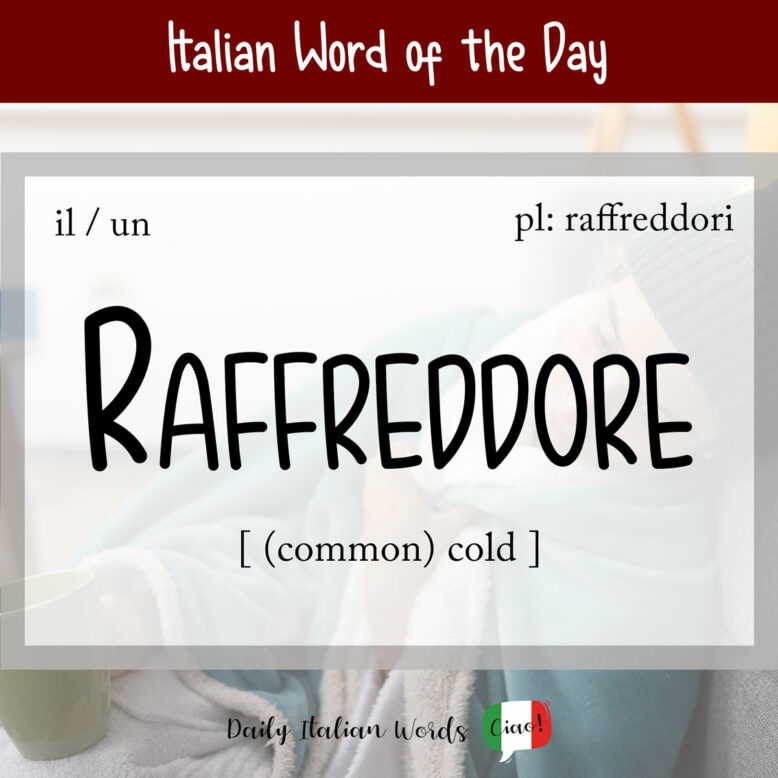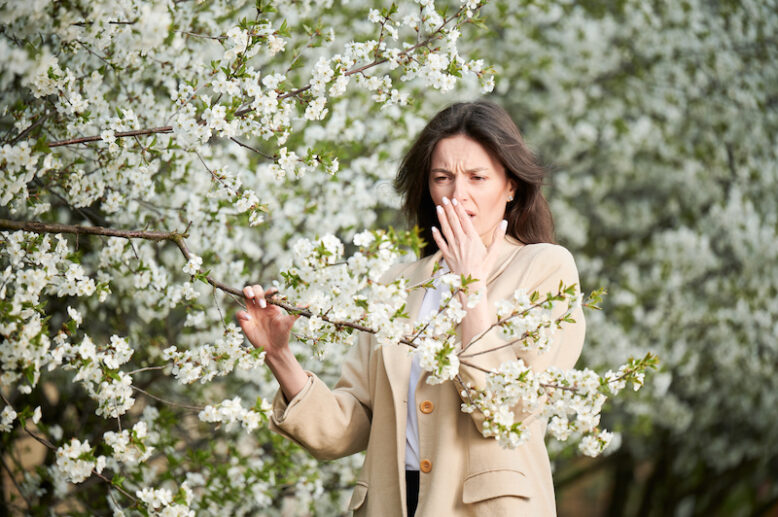With estate (summer) behind us and autunno (autumn) in full swing, the cold season is just around the corner. In Italian, a cold is referred to as a raffreddore.
raffreddore
cold


Important!
In English, we use the word cold to refer to both the sensation of coldness, and to the common infection that tends to occur during the cold months of the year. In Italian, the former should be translated as freddo, while the latter is always known as a raffreddore.
Raffreddore is a noun derived from the verb raffreddare, which means to cool or to cool down. It takes the following definite and indefinite articles:
- il raffreddore = the cold
- i raffreddori = the colds
- un raffreddore = a cold
- dei raffreddori = some colds
A particularly bad cold might be described as un brutto raffreddore, while un bel raffreddore (literally “a beautiful cold”) is used to emphasise just how severe the cold is, similar to saying “quite the cold” in English. What we call the sniffles in English can be translated as un raffreddore leggero (“a light cold”) in Italian. The common cold is known as il raffreddore comune, or simply il raffreddore without any additional descriptors.
Che brutto raffreddore che ho preso!
I’ve caught such a terrible cold!
Here are a few of the most common verbs seen used with raffreddore:
- avere il raffreddore = to have a cold
- prendersi un raffreddore = to catch a cold
- beccarsi un raffreddore = to catch a cold (informal)
- passare il raffreddore a qualcuno = to give someone a cold
- attaccare il raffreddore a qualcuno = to give someone a cold

Another way to say that you have a cold, in addition to avere il raffreddore, is essere raffreddato / raffreddata. It is also possible to translate this phrase as stuffed up, which in Italian can also be expressed as sono tutto tappato / tappata (I’m all blocked up).
Oggi sono molto raffreddato. Mi faccio una bibita calda.
I’ve got a bad cold today. I’m going to make myself a hot drink.
So, what are the most common symptoms (sintomi) associated with colds? In most cases, a cold starts off with a runny nose (il naso che cola), followed by a sore throat (il mal di gola), a cough (la tosse), and perhaps a low-grade fever (la febbre). If you are really stuffed up, you will probably start to sneeze (starnutire) and blow your nose (soffiarsi il naso) at some point. The best cure for any cold is lots of rest (riposo).
While colds are always caused by infections, there is one type of raffreddore that is not related to viruses: il raffreddore da fieno (hay fever).

Heather Broster is a graduate with honours in linguistics from the University of Western Ontario. She is an aspiring polyglot, proficient in English and Italian, as well as Japanese, Welsh, and French to varying degrees of fluency. Originally from Toronto, Heather has resided in various countries, notably Italy for a period of six years. Her primary focus lies in the fields of language acquisition, education, and bilingual instruction.


